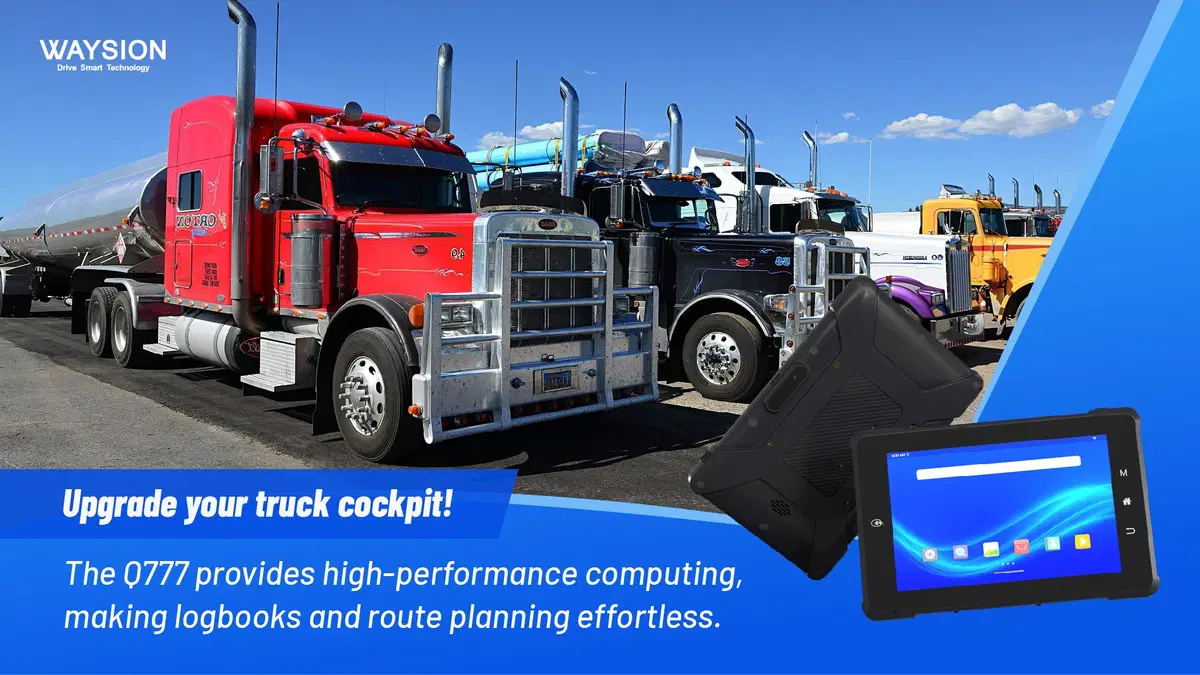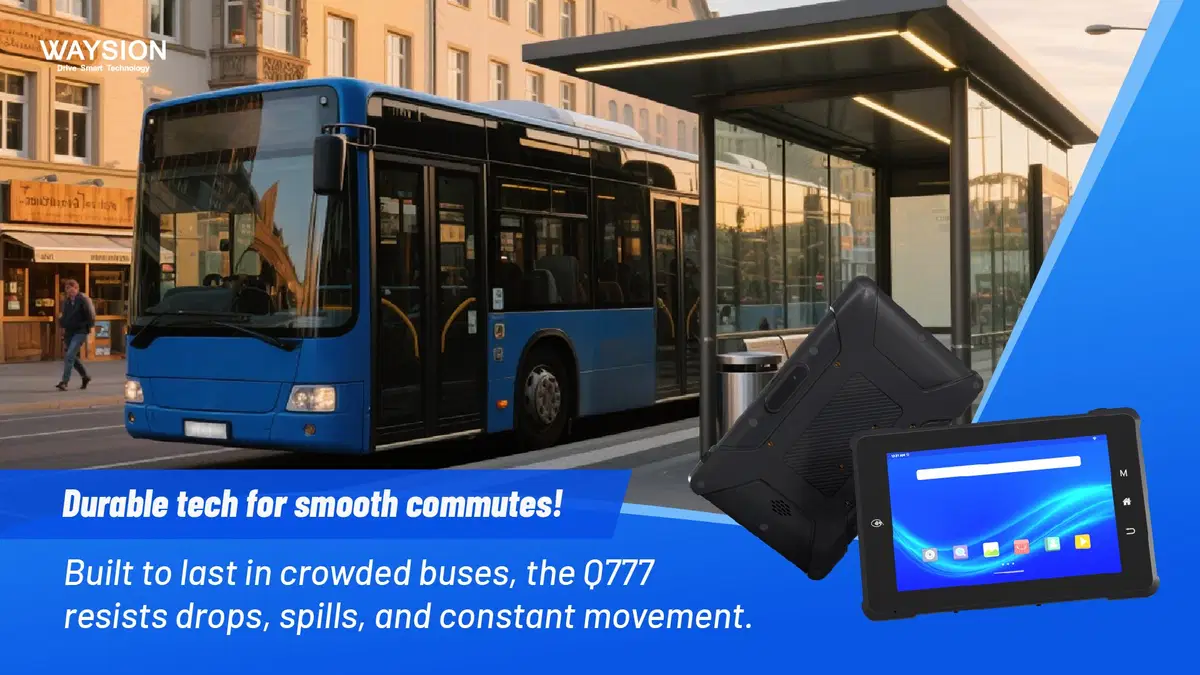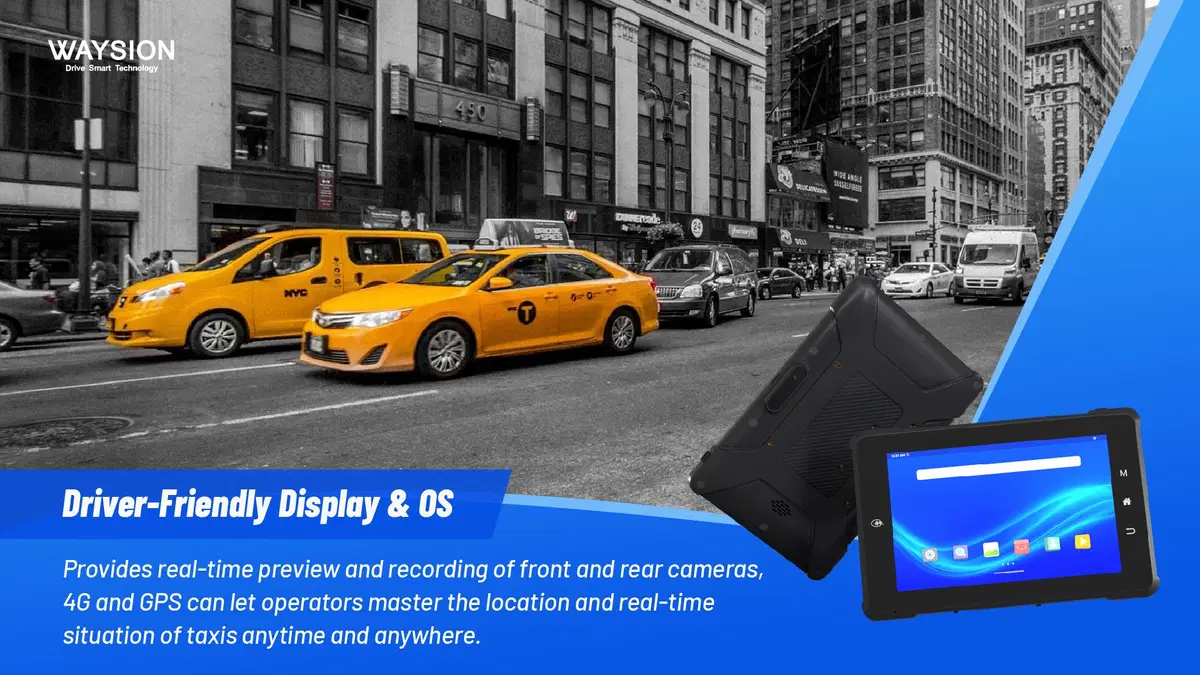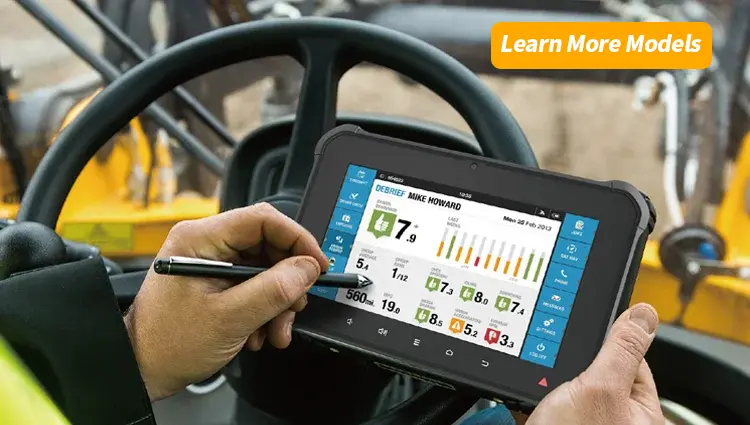Rugged vs. Consumer Tablets for Vehicle Use: In-Depth Pros, Cons, and TCO Analysis
The modern vehicle, particularly within logistics, emergency services, and field operations, is no longer merely a means of transport; it is a mobile data hub, a command center, and a critical node in a sprawling operational network. From Electronic Logging Devices (ELD) ensuring regulatory compliance to sophisticated telematics platforms optimizing routing and fuel consumption, mobile computing is the backbone of modern fleet management. The pivotal hardware decision facing countless fleet managers and purchasing officers today revolves around selecting the appropriate mobile device: the familiar, feature-rich consumer tablet, or the specialized, robust rugged tablet. This choice is far more nuanced than a simple comparison of price tags; it fundamentally impacts operational uptime, data integrity, driver safety, and, most critically, the Total cost of ownership (TCO) for vehicle computing solutions over a device’s three-to-five-year lifecycle. While the consumer option offers immediate familiarity and a lower entry cost, its inherent design vulnerability often transforms perceived savings into significant long-term expenses through failure and downtime. Consequently, a deep, analytical dive into the core differences—durability standards, connectivity features, and enterprise-level support—is essential for making an informed investment. The central argument herein posits that for environments characterized by constant vibration, extreme temperatures, and mandatory regulatory uptime, the rugged device, despite its higher upfront investment, provides superior value and is the only sustainable choice when choosing a tablet for ELD compliance and field service.
II. The Consumer Tablet: A Deep Dive into Accessibility and Limitations
Pros: Accessibility, Cost, and Aesthetics
The appeal of deploying a standard consumer tablet, such as a popular branded iPad or Galaxy Tab, within a vehicle fleet is immediately evident and multifaceted. Foremost is the undeniable advantage in initial purchase price. A flagship consumer tablet can typically be acquired for a fraction of the cost of its rugged counterpart, perhaps in the range of $350 to $800, compared to the $1,500 to $3,500 price point for an industrial model. This disparity allows organizations to rapidly deploy a larger number of devices with a smaller initial capital outlay, satisfying immediate budgetary pressure. Furthermore, the familiarity of the operating systems—namely iOS and standard Android builds—significantly minimizes the learning curve for drivers and field personnel. Training time is drastically reduced, as the interface, application store accessibility, and general user experience mirror the devices users interact with daily in their personal lives. The high-resolution, vibrant displays characteristic of consumer devices are optimized for multimedia consumption and general use, often featuring a sleeker, more aesthetically pleasing design than the utilitarian look of a rugged tablet. This superficial but sometimes important factor can contribute to initial user acceptance. However, this accessibility often creates a false sense of security regarding performance in a demanding mobile environment. Managers must critically evaluate if the benefits of a lower initial cost and user familiarity outweigh the significant, often hidden, risks associated with consumer tablet durability in commercial vehicles, which are simply not designed to face the daily rigors of a truck cab or emergency vehicle.

Cons: The Harsh Reality of the Vehicle Environment
Despite the attractive price point and intuitive interface, consumer tablets are fundamentally ill-equipped for the demanding, hostile environment found within a commercial vehicle. They are designed for climate-controlled, non-impact environments, not the constant shock, vibration, and temperature fluctuations inherent to life on the road. The primary vulnerability stems from their complete lack of adequate environmental protection. Consumer devices typically carry minimal or non-existent IP rating importance for in-vehicle tablets—perhaps an IP52 rating at best—which offers negligible protection against the pervasive dust and moisture common in service vehicles. More critically, they fail catastrophically when subjected to the operational parameters of commercial trucking. For instance, data from one leading rugged hardware manufacturer suggests that non-rugged devices deployed in industrial and transportation settings experience an average failure rate exceeding 45% in the first 18 months, compared to less than 5% for rugged alternatives. This is due to internal components being jarred loose by constant road vibration and the expansion/contraction caused by temperature swings, such as a device sitting on a dashboard in direct summer sun (easily reaching 65∘C) or being left overnight in an Arctic winter (–25∘C). The displays, while vibrant indoors, are often virtually unusable in direct sunlight due to lower nit brightness levels. These factors collectively underscore a simple truth: a low purchase price is meaningless if the device fails during a critical delivery, creating costly operational downtime and negatively impacting customer service reliability.
III. The Rugged Tablet: Built to Withstand the Extremes
A. Durability and Certification: The Core Distinction
The fundamental differentiator that elevates rugged tablets above their consumer counterparts is their uncompromising commitment to survival in the face of environmental adversity, a commitment validated by rigorous third-party testing and certification. This is where the Comparison of MIL-STD-810G certified tablets vs. standard iPads in cars becomes paramount. MIL-STD-810G is a United States Military Standard that dictates a series of environmental engineering considerations and laboratory test methods, covering everything from operational shock and high-altitude functionality to resistance against fungus and ballistic shock. For vehicle use, the crucial tests involve resistance to sustained vibration (simulating continuous highway travel) and multiple drops from operational height (often 1.2 to 1.8 meters, simulating a drop from a vehicle cab or pocket). A rugged device designed to pass MIL-STD-810G is built with an internal chassis that absorbs kinetic energy, often incorporating specialized memory mounting and solid-state drives (SSDs) to prevent data loss or hardware failure during high-G-force events. Furthermore, the IP rating importance for in-vehicle tablets cannot be overstated. IP (Ingress Protection) ratings quantify a device’s resistance to dust and liquids. For a fleet device, an IP65 or IP67 rating is often considered the minimum standard, signifying complete protection against dust ingress (the ‘6’) and protection against jets of water or even temporary submersion (the ‘5’ or ‘7’). This level of sealing is essential for devices used in maintenance bays, construction sites, or simply enduring a sudden rain shower during a delivery stop. These engineering benchmarks ensure that rugged tablets maintain consistent performance and longevity, directly translating into superior operational uptime compared to consumer models that inevitably succumb to vehicle-related wear and tear.
B. Functionality and Vehicle Integration
Beyond sheer survival, rugged tablets are engineered with an acute understanding of the specific workflow requirements of mobile professionals, providing functional advantages that consumer devices simply cannot match. A critical element is seamless and secure vehicle integration, focusing on optimized Mounting and charging solutions for vehicle-mounted tablets. Unlike consumer tablets that rely on generic, sometimes flimsy, USB charging cables and friction-grip mounts, rugged devices utilize custom-designed vehicle docks and cradles. These typically feature POGO-pin connectors for instant, reliable power and data transfer upon docking, eliminating wear and tear on ports. The mounts themselves are often vibration-dampened and lock securely, ensuring the tablet remains fixed even over rough terrain, meeting the safety requirements for fixed-in-cab equipment. Connectivity is another major feature gap. Rugged tablets frequently incorporate dedicated, highly accurate GPS modules (e.g., U-Blox or similar) that provide superior location accuracy and reliability, even in areas with limited cellular signal, which is vital for precise route optimization and location tracking. They also offer a wider array of legacy and specialized ports (e.g., serial ports, USB 3.0, Ethernet) to connect vital peripherals like OBD-II diagnostic tools, external antennas for enhanced signal strength, and specialized barcode scanners. These tailored features are instrumental for companies seeking the Best rugged tablets for fleet management and those with highly specific, non-standard input or output needs that extend far beyond basic consumer-level operation. The built-in versatility ensures that the tablet acts not just as a screen, but as a fully integrated, adaptable tool for every aspect of field service and logistics.
C. The Hidden Cost of Durability: Upfront Price
It is impossible to discuss the rugged tablet category without acknowledging the elephant in the room: the substantial upfront cost. The engineering, materials, and stringent testing required to achieve MIL-STD and high IP ratings translate directly into a significantly higher price tag compared to mass-market consumer devices. While a premium consumer tablet might retail for $700, a comparably sized rugged device with an IP65 rating and MIL-STD-810G certification often starts around $1,800 and can easily exceed $3,500 for specialized models with advanced features like integrated RFID readers or thermal imaging. This initial price shock is the primary barrier to entry for many organizations, especially smaller fleets or those new to deploying mobile technology. Furthermore, the specialized nature of these devices means that accessories, while robust and custom-fit, are also more expensive. Custom vehicle docks, replacement batteries (often hot-swappable enterprise-grade units), and repair services generally carry a premium. This high initial investment demands careful budgetary justification. However, framing this cost simply as an expense misses the core economic principle at play; the higher initial expenditure is not merely a cost, but an investment in reliability and operational continuity. The true financial picture only emerges when assessing the long-term economic viability, which mandates a complete cost-benefit analysis of rugged tablets for trucking based on failure rates and downtime, not just the sticker price.

IV. The Critical Metric: Total Cost of Ownership (TCO)
A. Calculating True TCO
To accurately compare the two tablet types, financial decision-makers must abandon the simple initial purchase price in favor of the Total cost of ownership (TCO) for vehicle computing solutions. TCO provides a holistic view of the total economic impact over the entire operational lifespan of the device, typically three to five years. The simplified TCO formula includes: Initial Cost + (Failure Rate × Replacement/Repair Cost) + Downtime Cost + Maintenance/IT Support. Let’s analyze a stark, yet common, scenario. Consider a fleet of 100 vehicles. Option A is a consumer tablet costing $500. If, as industry statistics suggest, the failure rate is 45% over three years, that means 45 replacements. The total hardware replacement cost is 45×$500=$22,500. Crucially, for a truck driver earning $25 per hour, if each failure requires just 4 hours of total downtime (diagnosis, switching, re-configuration), the lost labor cost is 45×4 hours×$25/hour=$4,500. Option B is a rugged tablet costing $2,000. With a conservative failure rate of 5% over three years, that’s 5 replacements, costing $10,000. The downtime cost is only 5×4 hours×$25/hour=$500. Over the three-year period, the 100 consumer tablets cost a total of $50,000 (initial) + $22,500 (replacement) + $4,500 (downtime) =$77,000, plus ongoing IT support headaches. The 100 rugged tablets cost $200,000 (initial) + $10,000 (replacement) + $500 (downtime) =$210,500. While the initial cost of the rugged solution is four times higher, the reliability means the overall financial difference is much narrower than perceived, and the calculation often fails to capture the true cost of lost business, which is addressed next.
B. Intangible Costs and Operational Efficiency
The true value proposition of the rugged tablet is often quantified in terms of intangible costs—those elements of operational friction and lost opportunity that do not appear neatly on a balance sheet but significantly impact a company’s reputation and profitability. When a consumer tablet fails, the resultant driver frustration is an immediate side effect. Dealing with broken equipment, losing critical navigation data, or being unable to process a Proof-of-Delivery (POD) is a major morale killer, impacting productivity and increasing turnover. More significantly, device failure translates directly to a loss of operational efficiency, a major factor in the Cost-benefit analysis of rugged tablets for trucking. In the logistics and field service sectors, uptime is synonymous with revenue. If a device responsible for managing a delivery route, logging working hours (ELD compliance), or receiving time-sensitive job dispatches fails, the entire service chain breaks down. Delayed deliveries, missed appointments, and non-compliance fines represent financial penalties far exceeding the price of a replacement tablet. For instance, a single major ELD non-compliance fine in the US can easily run into thousands of dollars. The rugged tablet, with its certified resilience and reliable, secure docking solution, guarantees maximum uptime, ensuring that regulatory requirements are consistently met and that the flow of business-critical data remains uninterrupted. This certainty and continuity are priceless assets that fundamentally justify the initial premium, transforming the device from a mere tool into a strategic asset.

V. Software, Security, and Compliance Considerations
A. Operating System and Ecosystem
The management of the operating system (OS) and software ecosystem presents another distinct challenge when comparing the two tablet types, particularly in the context of long-term fleet deployment. Consumer tablets are tied to rapid, often non-negotiable OS updates enforced by manufacturers like Apple and Google, designed for individual users. While these updates bring new features and security patches, they can also introduce incompatibility issues with specialized fleet management software, proprietary ELD applications, or enterprise mobility management (EMM) platforms. This instability can require costly re-certification and downtime. Rugged tablets, conversely, often run on enterprise-focused versions of Android (such as Android Enterprise Recommended programs) or Windows Pro, offering crucial long-term OS support (LTS) and stability. Manufacturers of rugged devices work closely with software vendors to ensure the OS platform remains stable for years, allowing IT departments to control the update cycle rather than being dictated by a consumer product roadmap. This level of control is absolutely essential when Choosing a tablet for ELD compliance and field service. ELD solutions require a certified, stable application environment that cannot tolerate unexpected OS-induced crashes or feature changes. Moreover, rugged devices are designed to seamlessly integrate with enterprise management tools right out of the box, facilitating easier remote provisioning, bulk configuration, and over-the-air updates necessary for managing hundreds of dispersed devices.
B. Security and Data Integrity
In an era of increasing data regulation and cyber threats, the security and integrity of data processed in the vehicle are non-negotiable requirements, and here the rugged tablet offers tangible hardware advantages. Consumer devices primarily rely on software-based security, which is sufficient for personal use but less robust for sensitive corporate data. Rugged tablets, however, frequently incorporate hardware-level security features that are vital for enterprise deployments. These include integrated Trusted Platform Modules (TPM), which provide a secure cryptographic processor for hardware authentication and key storage, protecting against malicious tampering. Many models also feature integrated smart card readers or specialized biometric sensors, enabling highly secure multi-factor authentication for drivers accessing sensitive manifests, customer data, or regulatory information. This enhanced hardware security is crucial for compliance with various data protection mandates. Furthermore, the inherent durability of the rugged device contributes directly to data integrity. A tablet that sustains physical damage—a drop, a screen crack, or thermal failure—runs a high risk of data corruption, leading to system resets, lost hours, and incomplete records. The robust design of rugged tablets, especially their use of shock-mounted SSDs, minimizes this risk, providing a far more reliable platform for continuous data logging and transmission. For Best rugged tablets for fleet management, security is not an add-on; it is a fundamental design principle ensuring both regulatory adherence and corporate risk mitigation.
VI. Conclusion
The debate between rugged and consumer tablets for vehicle use ultimately distills down to a choice between low initial expenditure and guaranteed operational reliability. For mission-critical environments, logistics, first response, and field service operations, the initial sticker price of a rugged tablet is a misleading metric. The analysis of Total cost of ownership (TCO) for vehicle computing solutions overwhelmingly demonstrates that the specialized engineering of rugged devices—validated by MIL-STD-810G, high IP ratings, and enterprise-grade connectivity—translates directly into lower long-term costs. By eliminating the staggering hidden costs of frequent device failure, lost operational time, driver frustration, and potential regulatory fines, the rugged tablet secures its position as the superior, more financially prudent choice. Organizations must look beyond the familiar aesthetics of consumer electronics and prioritize the specifications that truly matter in the cab: resilience against shock and vibration, certified IP rating importance for in-vehicle tablets, and integration capabilities like POGO-pin docking. The investment in a purpose-built device is an investment in fleet uptime, data integrity, and regulatory compliance, making it the strategic foundation for a resilient and profitable mobile operation. For any entity dedicated to maximizing efficiency and minimizing risk, the choice should unequivocally lean toward the robust, durable solution that is built to work every single day, regardless of the environment.








